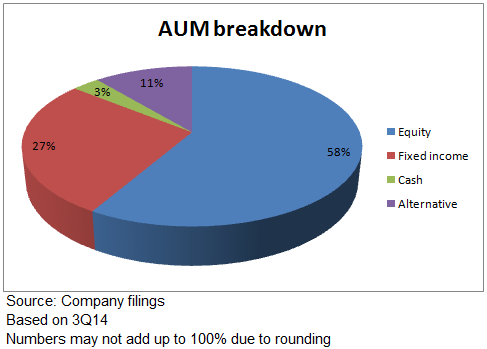Separately Managed Accounts A Mutual Fund Alternative Yahoo Finance Canada
Post on: 7 Июль, 2015 No Comment

The investment management world is divided into retail and institutional investors. On one side are the traditional products designed for middle-income individual investors, like the retail classes of mutual funds; these have modest initial investment requirements. On the other side are managed strategies for institutions, with imposing minimum requirements of $25 million or more. In between these, however, is the growing universe of separately managed accounts (SMAs) targeted at wealthy (but not necessarily ultra-wealthy) individual investors. This article will examine the world of SMAs and what investors—or their financial advisors—should keep in mind when considering these investment vehicles.
Defining Managed Separate Accounts
A SMA is a portfolio of assets under the management of a professional investment firm. In the United States, the vast majority of such firms are called registered investment advisors, and operate under the regulatory auspices of the Investment Advisors Act of 1940 and the purview of the U.S. Securities and Exchange Commission (SEC). One or more portfolio managers are responsible for day-to-day investment decisions, supported by a team of analysts, operations and administrative staff. SMAs differ from pooled vehicles like mutual funds in that each portfolio is unique to a single account (hence the name). In other words, if you set up a separate account with Money Manager X, then Manager X has the discretion to make decisions for this account that may be different from decisions made for other accounts.
Say, for example, that a manager operates a diversified core equity strategy including 20 stocks. The manager decides to launch a mutual fund containing these stocks and also a separately managed account offering. Assume that at the outset, the manager invests all portfolios with the same weight—both the mutual fund and the SMAs. From a client’s perspective, the beneficial interests in either vehicle are identical at the outset, but the statements will look different. For the mutual fund client, the position will show up as a single-line entry bearing the mutual fund ticker—most likely a five-letter acronym ending in X. The value will be the net asset value from the close of business on the statement’s effective date. The SMA investor’s statement, however, will list each of the equity positions and values separately, and the total value of the account will simply be the aggregate value of each of the positions.
From this beginning point, things will begin to diverge. Decisions the manager makes for the mutual fund—including the timing for purchase and sale of shares, dividend reinvestment and distributions—will affect all fund investors in the same way. For SMAs, however, the decisions are at the account level and will therefore vary from one investor to another.
Mass Customization
The high level of customization is one of the main selling points of SMAs, particularly when it comes to individual taxable accounts. Portfolio transactions have expense and tax implications. With managed accounts, investors can feel like they have a greater degree of control over these decisions, and that they are more closely attuned to the objectives and constraints set forth in the investment policy statement.
So what is the price of entry for this extra level of customized attention? There is no single answer for the several thousand managers that make up the SMA universe. As a general rule of thumb, the price of entry starts at $100,000. SMAs targeted to high net worth retail investors tend to set account minimum balances between $100,000 and $5 million. For strategies designed especially for institutional managers, minimum account sizes may range from $10 million to $100 million.

For style-based investors who seek exposure to several different investment styles (e.g. large-cap value, small-cap growth) the price of entry goes up, as there will be a separate SMA, and a separate account minimum, for each style chosen. For example, an investor seeking style-pure exposure in the four corners of the style box—large cap, small cap, value and growth—might need to have at least $400,000 available to implement an SMA-based strategy. Other investors may prefer an all-cap blend (or core) approach that could be found through a single manager.
Fee Structures
One of the difficulties inherent in making an apples-to-apples comparison among investment offerings is that fee structures vary. This is even trickier for SMAs than for mutual funds, for reasons we will explain here.
Mutual fund fees are fairly straightforward. The key number is the net expense ratio, including the management fee (for the professional services of the team that runs the fund), miscellaneous ancillary expenses and a distribution charge called a 12(b)1 fee for certain eligible funds. Many funds also have different types of sales charges. Funds are required to disclose this information in their prospectuses and show explicitly how the fund expenses and sales charges would affect hypothetical returns over different holding periods. Investors can easily obtain these prospectuses from the fund’s parent company. either online or through the mail.














